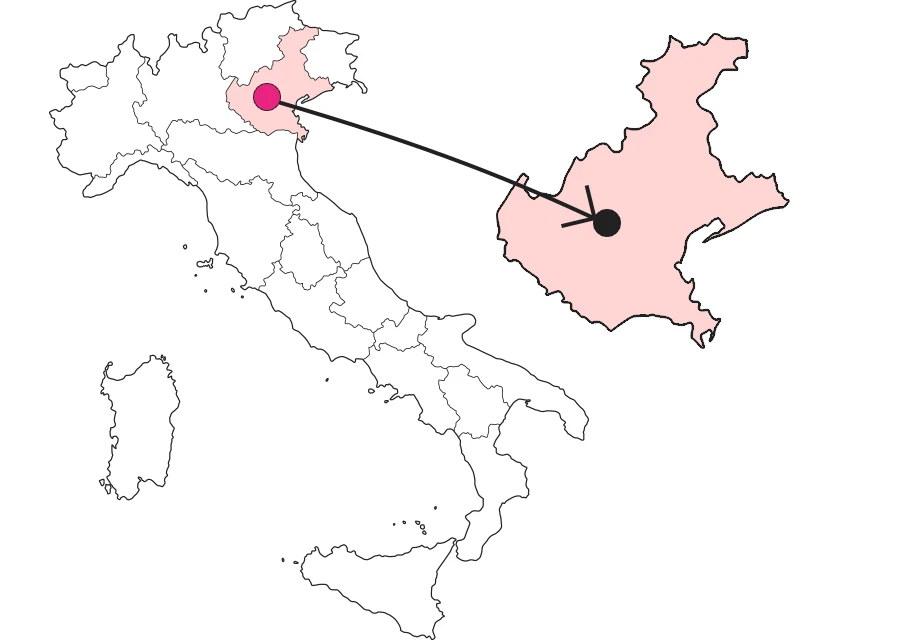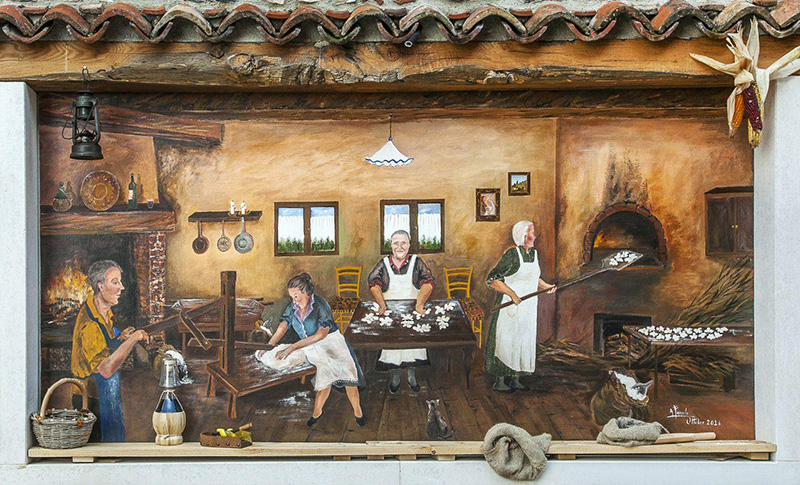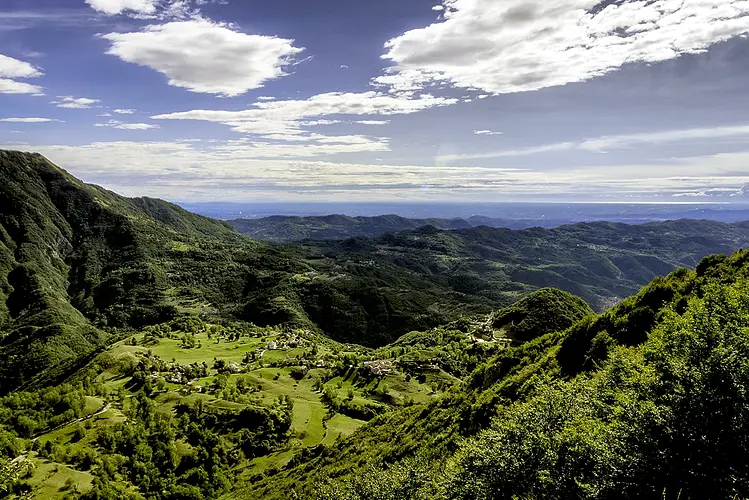SHARRYLAND







I Caùci di Alvese De.Co.
Germanic origin and Francophone name for Sunday dish

Where is

Caùci are a sweet dish from the poor peasant tradition of Alvese. They are large sweet dumplings prepared with ingredients available in every season in every home, even when people lived in times of poverty: bread, an egg, raisins, lemon juice, sugar, grappa, water and milk. An essential tool is the pile, a typical stone mortar once found in every peasant home. The perfect topping? Melted butter, sugar and cinnamon. Enjoy!
Caùci may bring to mind other traditional dishes whose dough is made from bread. Just think of the delicious and famous dumplings of Trentino-South Tyrol. However, we cannot overlook some fundamental differences between the two dishes. The most obvious and simple, is the shape: a large ball for canederli, while caùci are slightly elongated. In addition, caùci are not made with stale bread, but with crumbled biscuit bread. Finally, these gnocchi from Alvese, have nothing to do with a first course. Their basic characteristic is that they are a single sweet dish. Speaking of which...be sure not to call it dessert!
 The manual preparation of "Caùci di Alvese De.Co."
The manual preparation of "Caùci di Alvese De.Co."On the tables of Alvese families it happens often to eat caùci throughout the year. Since 2009, however, tasting caùci is no longer exclusive to a few families who are the keepers of this tradition. In fact, this dish has been included within the food and wine menu of the "Festa dei Maruni" for the opening night, Friday. Over the years, the "caùcio evening" has been a growing success, finally allowing an increasing number of people to taste this excellence of peasant tradition that was inevitably in danger of disappearing over time.
 One of Alvese's murals shows traditional bread making
One of Alvese's murals shows traditional bread makingThe fact that the preparation of caùci has remained a memory in other towns in the area suggests that this dish was probably once widespread in large part in the areas populated by the descendants of the Cimbri. In fact, for the type of preparation, the caùci of Alvese are reminiscent of the knödel of German cuisine, the knedlíky of Czech cuisine, and the closer dumplings. In 2018, the municipal administration of Nogarole decided to give this dish the Denominazione Comunale, so now caùci are officially Caùci di Alvese De.Co.
As much as the recipe suggests the preparation is of Germanic origin, the name has nothing to do with the terms canederli, knödel and knedlíky. Whether it is then a pure invention of Alvese? Not necessarily. If you remember, we talked about their elongated shape. Well, this is reminiscent of that of the French quenelle, and it seems that this very term, once it arrived in Lessinia, led to the name caùci.
Enter the Map of Italy's Undiscovered Wonders and find treasures where you least expect it... Inspire, Recommend, Share...
Collections
It is part of the Land
The Map thanks:
In the Community
Enter the Map of Italy's Undiscovered Wonders and find treasures where you least expect it... Inspire, Recommend, Share...
Where is

Collections
It is part of the Land


